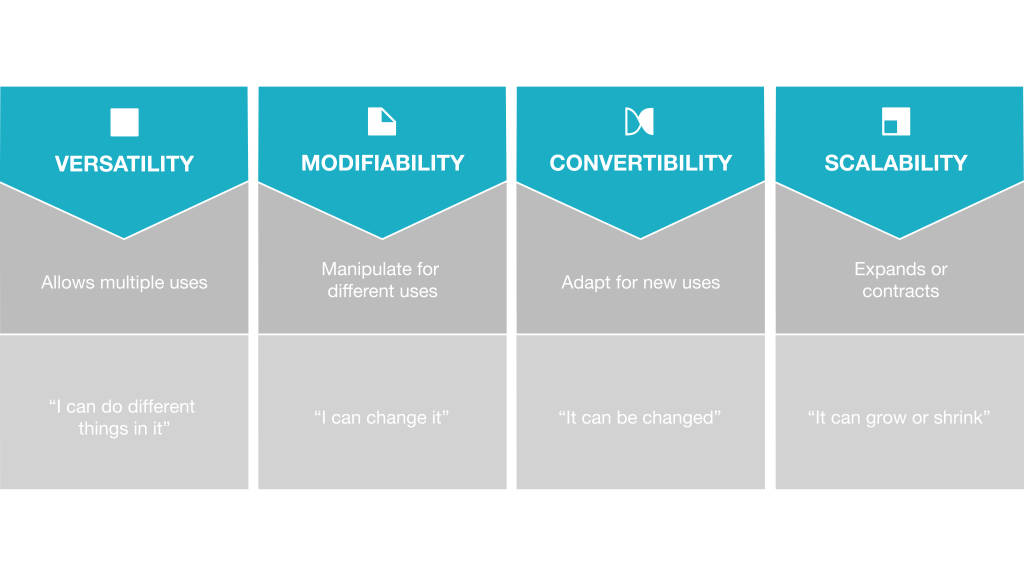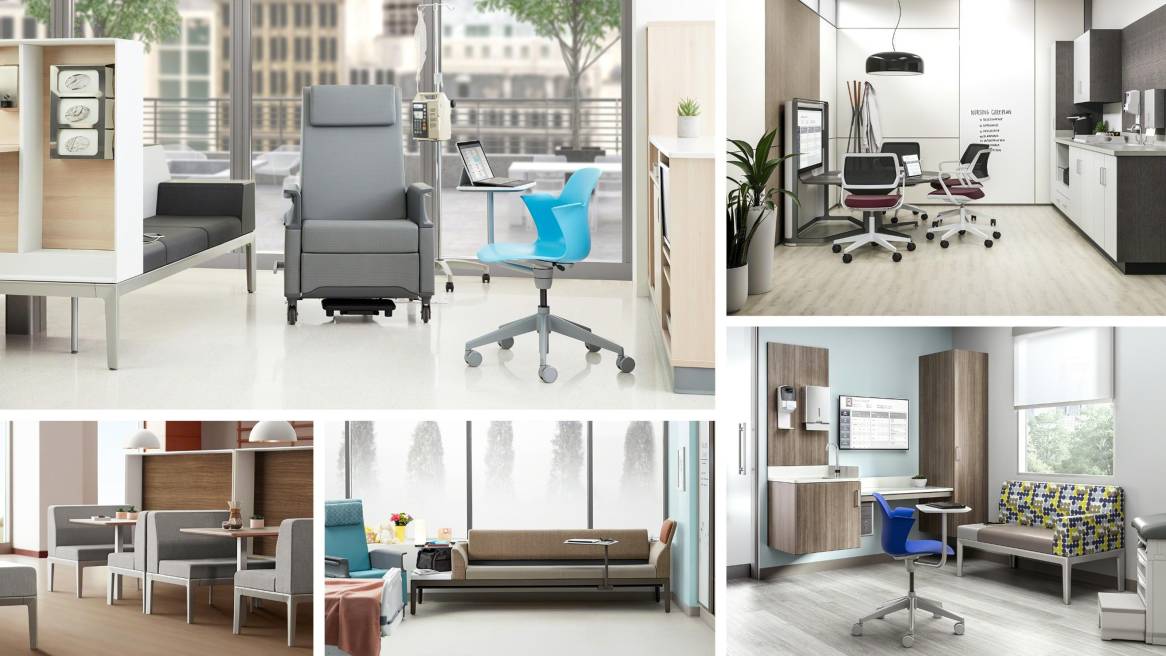Flexibility in Healthcare Environments
How a flexibility framework can prepare healthcare spaces for change
Babies born today live to be about 79 years old, yet just about 30 years ago, the average U.S. life expectancy was around 50. Healthcare is constantly adapting to changes impacting the patients it serves. Demographics, diseases, rules, regulations, medical technology and equipment, a heightened focus on sustainability, and even disaster response needs are evolving. Yet, healthcare facilities are designed for a long lifespan—intentionally created to last 30 to 50 years.
The need to be change-ready and the increase in the rate of outpatient care led to a recent exploration into flexibility in healthcare design. In collaboration with the Center for Advanced Design Research and Evaluation (CADRE) and HKS Architects, Steelcase completed a review of the existing literature on flexibility in healthcare spaces and released a study titled FleXX: A Study of Flexibility in Outpatient Settings.
“We’re committed to delivering value and enhancing flexibility in new and existing spaces.”
Michelle OssmannDirector of health environments, Steelcase Inc.
Depending on who you ask, the definition of flexibility can be very different. The words “adaptable” and “flexible” can be used interchangeably. Terms like versatile and scalable add to the range of definitions around the concept. Without a clear, agreed upon framework to discuss flexibility, the difficulty in applying it in healthcare facilities is compounded.
Steelcase, HKS Architects and CADRE conducted a subject matter expert survey* with healthcare decision-makers. Key stakeholders included healthcare administrators, facility and nurse managers and clinical workers. The learnings from the survey informed an understanding of flexibility.
Definitions of Flexibility — What Does It Mean?
The survey revealed how healthcare stakeholders define flexibility differently.
- Nurse managers described it in operational terms as the ability to adapt, shift function and modify in response to patient care and employee needs. Work-life balance was also a recurrent theme.
- Healthcare administrators described flexibility in organizational terms, with greater references to the market, community and efficiency.
- Facility managers, not surprisingly, were the most spatially focused in their definition of flexibility. There were more references to changing technology, standardization, modifiability, utilization and multi-use capabilities.
Though everyone defined flexibility from their own perspective, they all agreed facilities must become more flexible to meet demands for adaptation and change.
70% of respondents think flexibility is part of good design. All would pay a 20% premium for certain types of flexibility.
Flexibility — An Intuitive, User-Focused Framework
The ways these stakeholders defined flexibility tended to match the frameworks found in existing literature, particularly in reference to flexibility in educational settings (Monahan, 2002). To facilitate clear communication and actionable conversations, the FleXX report defines four key attributes of flexibility for outpatient healthcare environments: versatility, modifiability, convertibility and scalability.

Versatility is the ability or intention for a space to be used for multiple and different functions with limited or zero change to tangible building attributes. A versatile space gives people agency over how they use it.
Example: Consider a multipurpose zone that replaces traditional waiting rooms. People are able to work, interact, self-educate and (sometimes) shop as they wait for their appointment. Organizations reduce costs with versatile spaces that serve multiple purposes.
Modifiability invites a user or owner to actively change a space or object without needing support from facilities or contractors. Modifiable elements do not require any permanent infill structure change and are among the most popular methods for providing flexibility to a space. Organizations reduce costs using furniture that supports multiple functions or that can be updated without decommissioning it.
Example: Consider a baby crib that transitions into a toddler bed and then becomes a headboard for a twin bed.
Convertibility adapts space for new uses. The space can be changed but will need minor renovation and involve the facilities department. Convertible elements can replace the infill of a building from one functional layout to a different functional layout while keeping the base building the same, which in essence changes the floor plan to perform a different purpose. Organizations can reduce costs with convertibility, but it requires careful planning of the associated mechanical, electrical and plumbing elements that touch the space being converted.
Example: Think of a shipping container repurposed into a tiny home.
Scalability allows space to expand or contract. Space can physically grow or shrink but will need minor or major renovation. Scalability is the most complex of the four attributes and typically involves construction expertise to happen effectively.
Example: Envision shell space in a building, an entire floor that’s left unfinished but was constructed in order to meet future needs for expansion.
Investing in Flexibility
Flexibility addresses the need to evolve over short and long periods of time. It responds to changing technology and service line trends. In addition to clarity around definitions, the report also addresses if facility owners will be willing to assume the costs associated with flexibility. On average, survey respondents say they are willing to invest more in capital costs if they can produce a greater return, improve patient outcomes, become more efficient and productive, or have more options for adapting as needed. They view flexibility as an operational strategy from the outset, and the majority of them expect to see it used during the early and mid-life of their facility.
On average, healthcare organizations would invest 20% more in capital costs in order to achieve flexibility throughout the life of the building.
They survey also asked people when they would know if they had received a return on their flexibility investment. Respondents indicated one to five years was their expectation for success. Their measurements would include organizational growth, improvements in the bottom line, ease of change and increases in patient and employee satisfaction. As demands for flexibility increase, stronger return on investment (ROI) definitions and acceptable lengths of time may be areas of future study.
Forward Into the Flexible Future
Flexible solutions need to be applied to operations and space simultaneously for healthcare facilities to become strategic assets. Only then will these facilities be capable of allowing an organization to adapt to changing market, climate and clinical needs. Defining key elements of flexibility makes it easier for healthcare leaders, architects and designers to identify ways to address these emerging needs. Putting the flexibility framework into practice helps organizations be change-ready, no matter what the future brings.
* The subject matter expert survey elicited 143 total responses from 40 healthcare administrators, 37 facility managers, 51 nurse managers and 15 clinical workers in various roles. The respondents had an average of 28 years of experience in their professions.
HEALTHCARE FLEXIBILITY BOOKLET
Explore how a flexibility framework can prepare healthcare spaces for change.


